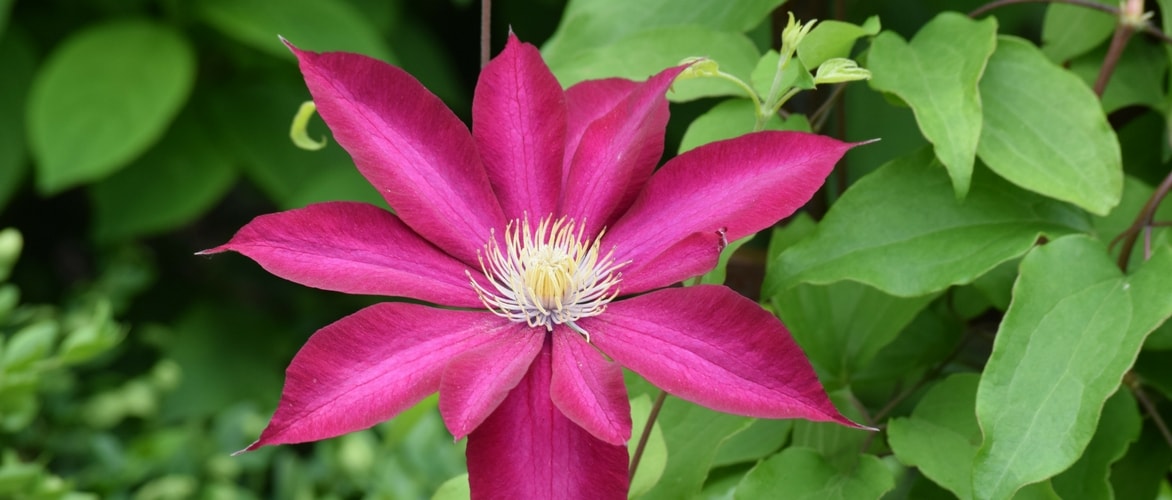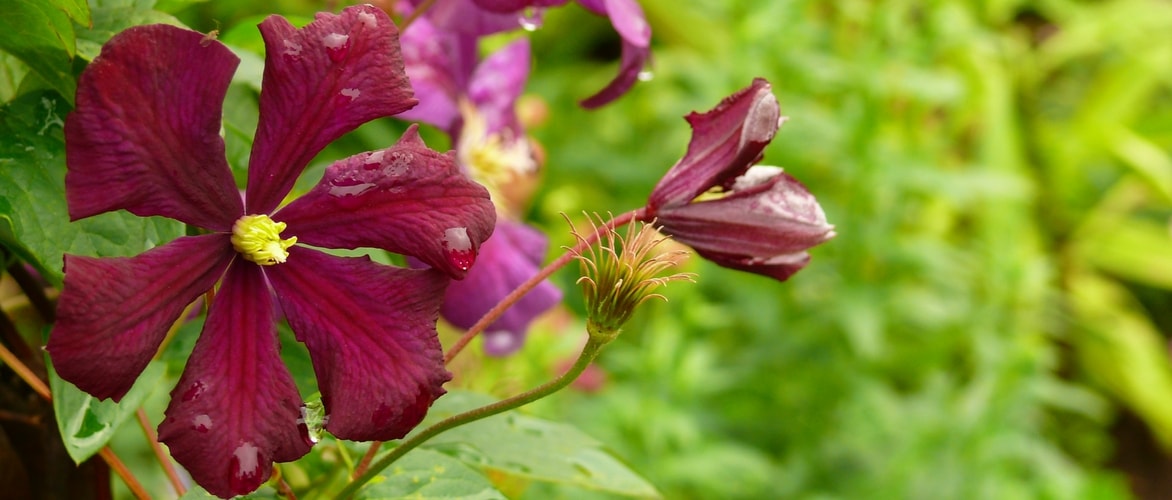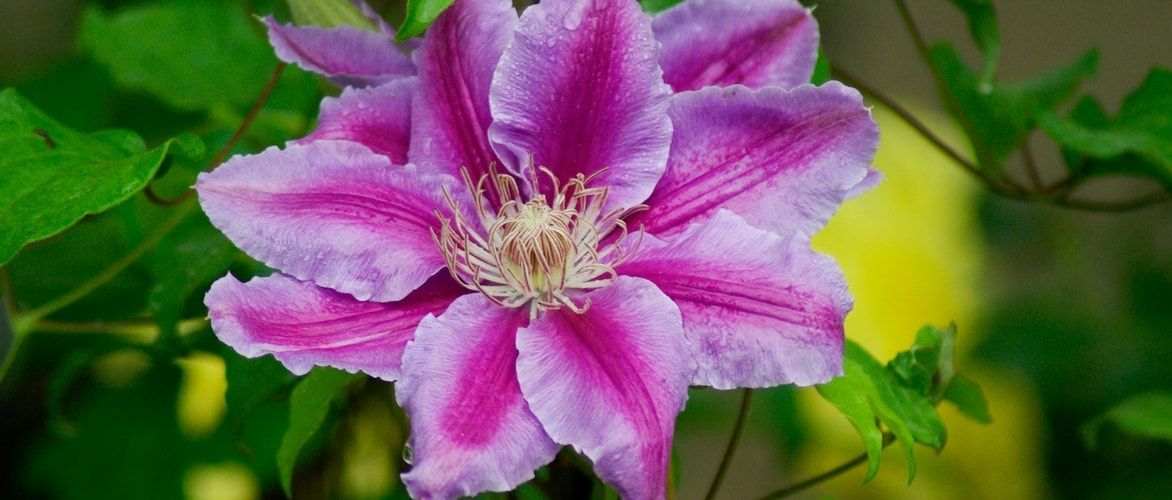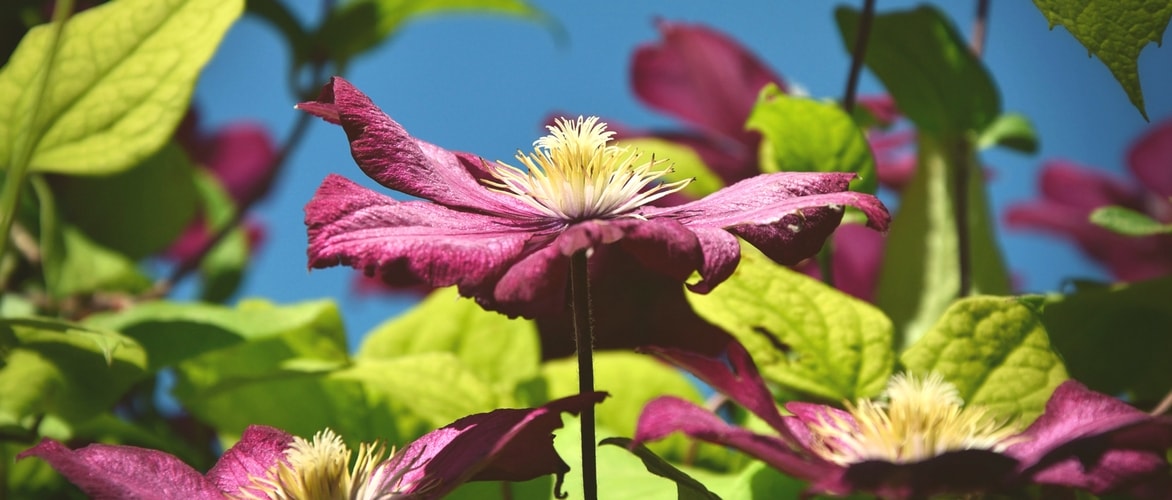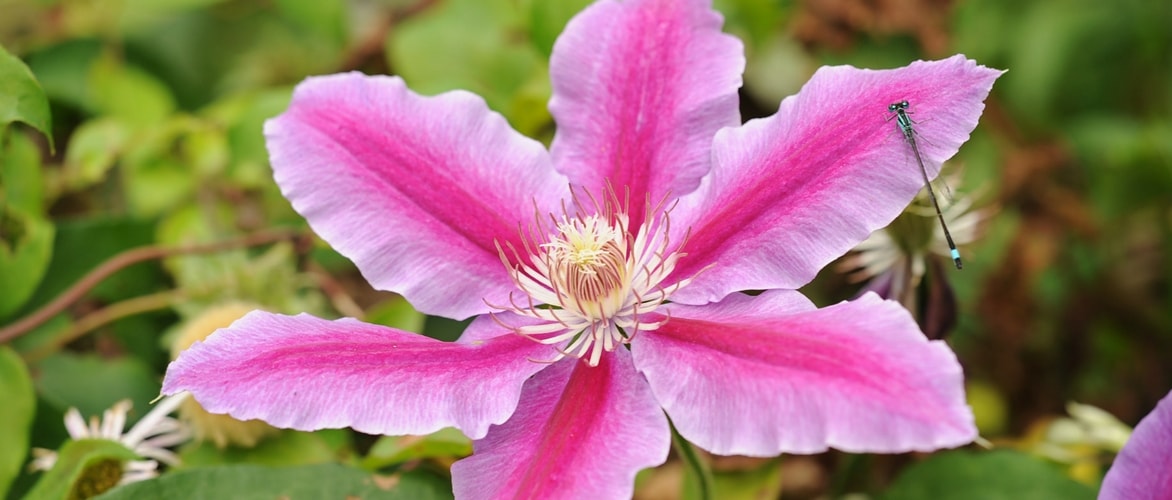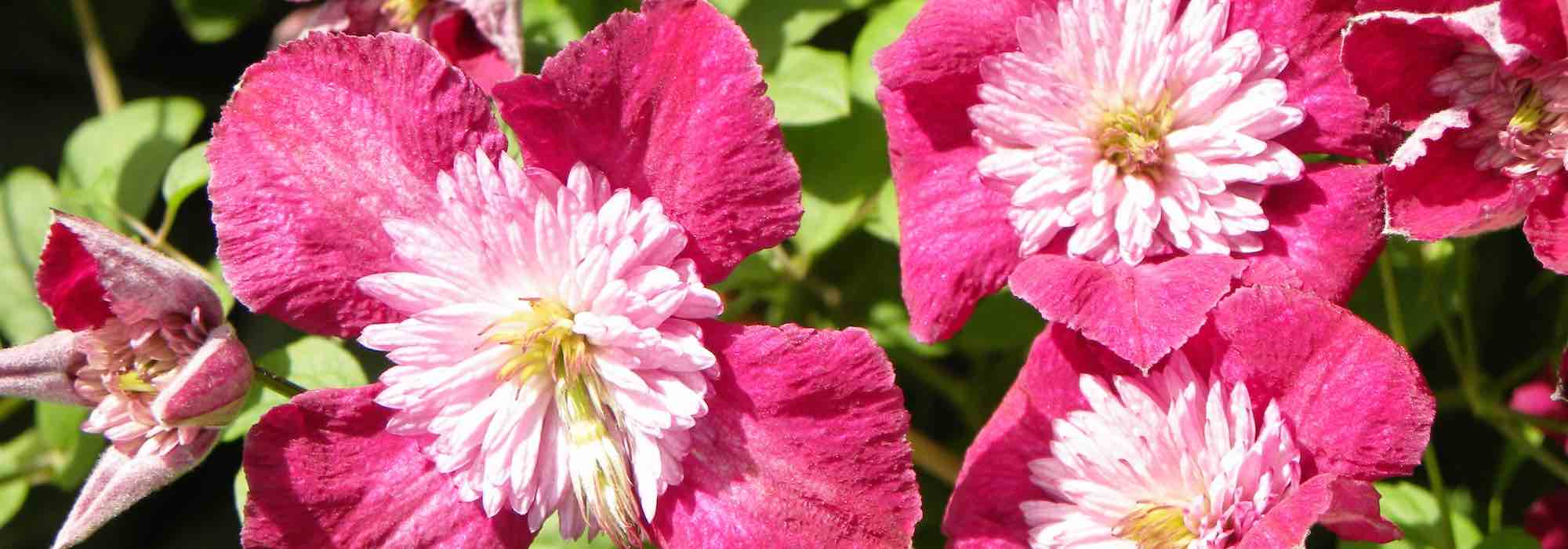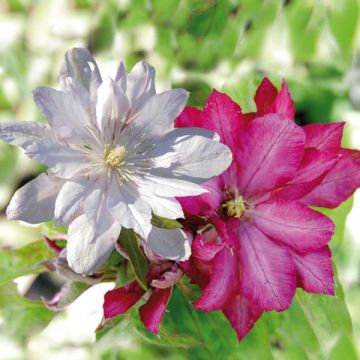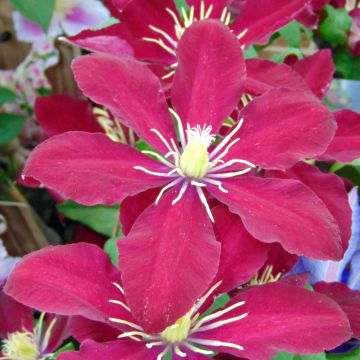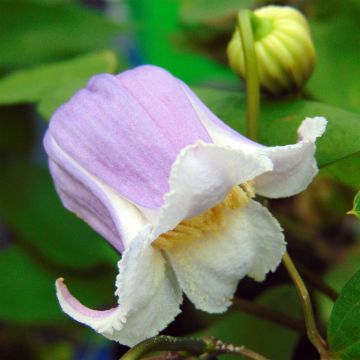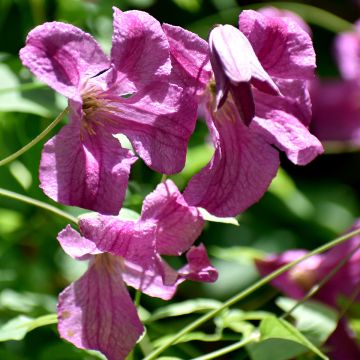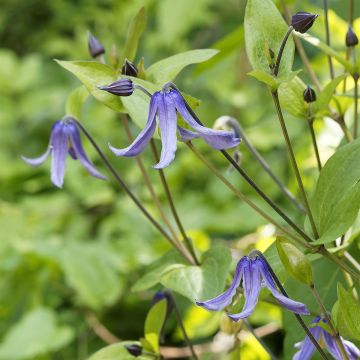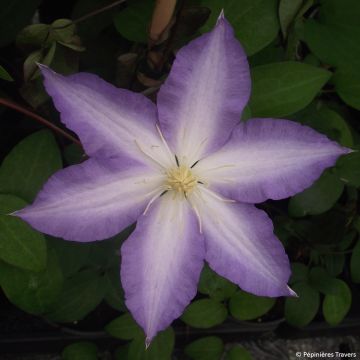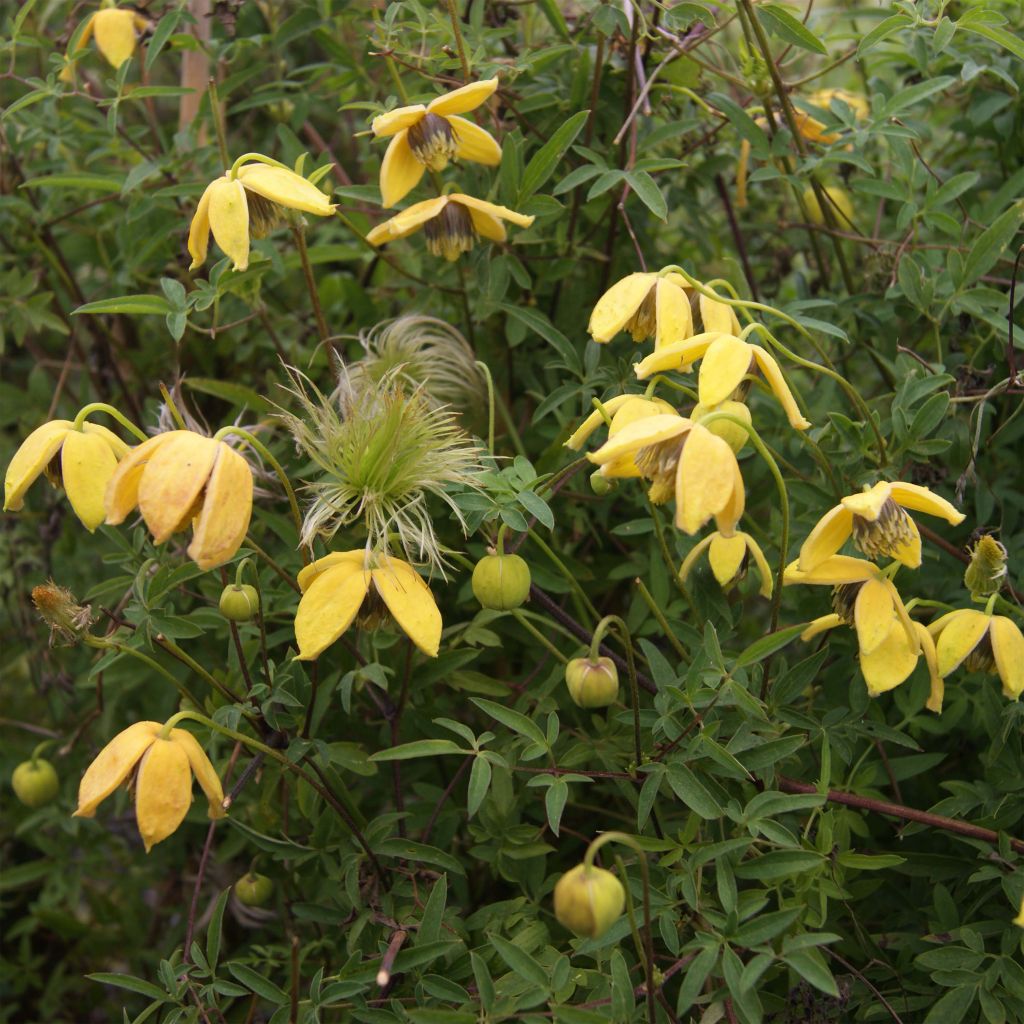

Clematis tibetana Orange Peel
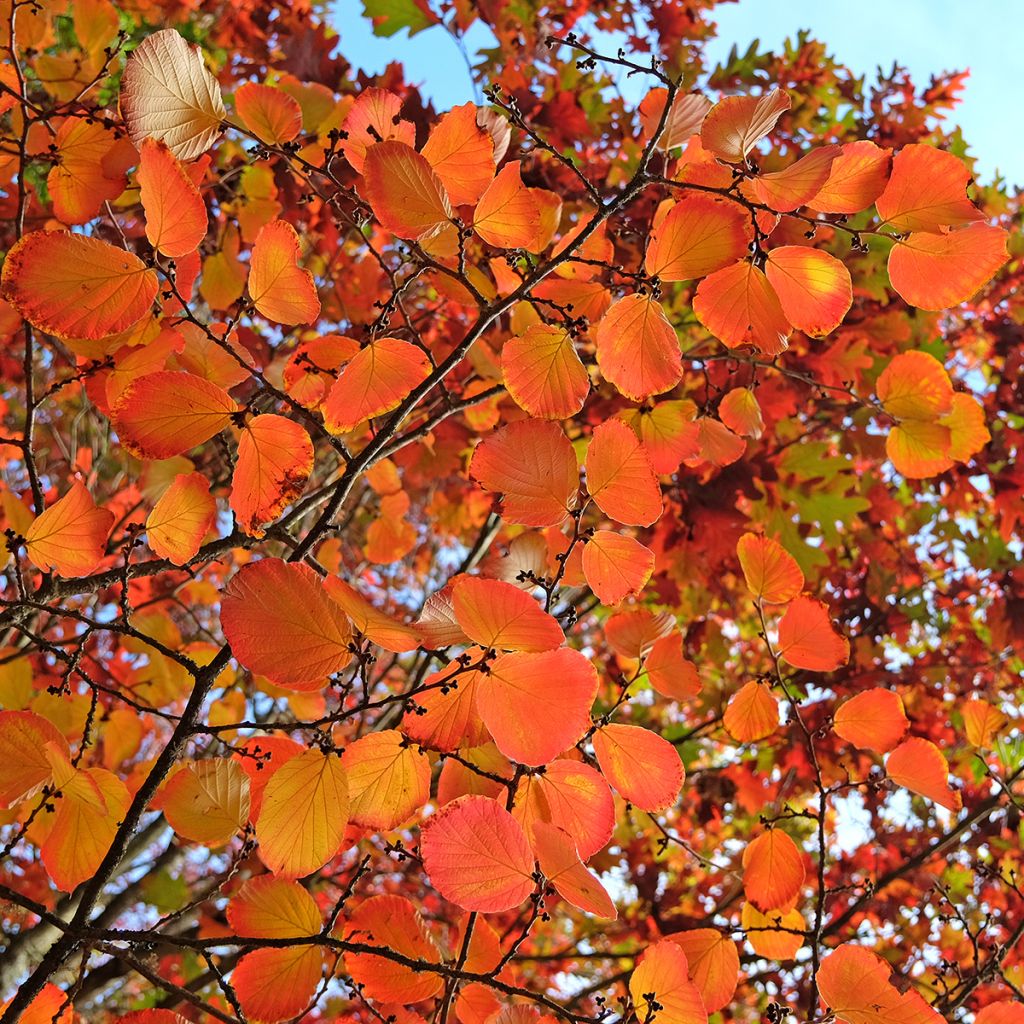

Clematis tibetana Orange Peel


Clematis tibetana Orange Peel
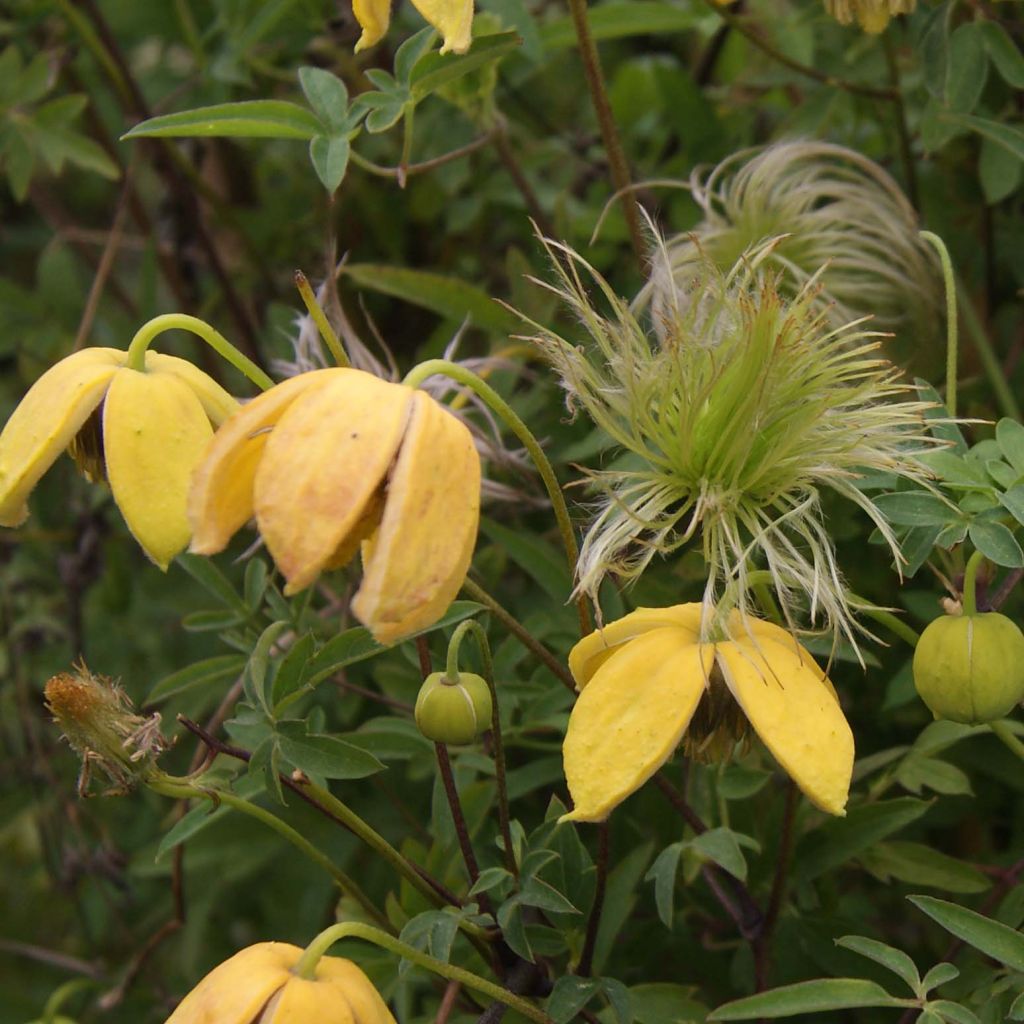

Clematis tibetana Orange Peel


Clematis tibetana Orange Peel
Clematis tibetana Orange Peel
Clematis tibetana var. vernayi Orange Peel
Vernay's Clematis, Orange Peel Clematis
This one started off very well, to the point of beginning to colonise the fence. I must say it is the most favourable exposure for the clematis: a south-facing wall protecting the base in the morning and rose border in the foreground. However, I am waiting to see about the Duchess off Albany; as for the Gravety Beauty, it is definitely dead (black root system with no sap). And yet I repeat, it is an ideal spot for clematis, others have been thriving there for a long time without any maintenance other than cutting back the dead stems before winter.
Manu , 09/11/2024
Special offer!
Receive a €20 voucher for any order over €90 (excluding delivery costs, credit notes, and plastic-free options)!
1- Add your favorite plants to your cart.
2- Once you have reached €90, confirm your order (you can even choose the delivery date!).
3- As soon as your order is shipped, you will receive an email containing your voucher code, valid for 3 months (90 days).
Your voucher is unique and can only be used once, for any order with a minimum value of €20, excluding delivery costs.
Can be combined with other current offers, non-divisible and non-refundable.
Home or relay delivery (depending on size and destination)
Schedule delivery date,
and select date in basket
This plant carries a 6 months recovery warranty
More information
We guarantee the quality of our plants for a full growing cycle, and will replace at our expense any plant that fails to recover under normal climatic and planting conditions.
Would this plant suit my garden?
Set up your Plantfit profile →
Description
The 'Orange Peel' Clematis is sometimes called Clematis tibetana var. vernayi or Oriental Clematis. Other authors classify it among the Tangutica Clematis. The important thing is that it is a variety that is very solid, vigorous, disease-resistant, and unusual. During a long summer and autumn period, it offers curious bell-shaped flowers, yellow in colour turning to orange as they fade. Its light foliage with toothed leaflets of a greenish-blue colour is also very decorative, as are its pretty feathery and silvery fruits that persist on the plant in winter. Very hardy and original, still little known in France, it is useful for concealing an unattractive small building, a fence, a slope, a pylon, or an old tree.
The Clematis genus belongs to the Ranunculaceae family. The botanical species tibetana var. vernayi is native to the Himalayas: Nepal, western Tibet, and southwest Sichuan Province, at altitudes between 2000 and 4800 m (6562 and 15748ft). It is a climbing plant with woody roots and voluble stems, particularly hardy, sturdy, and floriferous. It is classified in the group of clematis that flower until autumn on the current year's shoots. It forms a dense bush that can reach a height of 5 to 6 m (16 to 20ft) and a width of 2.5 to 3m (8 to 10ft), with rapid growth. The flowering begins in June, has a rest period in July, then resumes in August-September and only ends with the first frost. The flower buds, solitary and grouped in cymes, are carried by long peduncles in the axils of the leaves, spherical and light green in colour. They open into flowers of 4 to 6cm (2in) in diameter, in the shape of Chinese lanterns, composed of 4 bright tepals, darkening from lemon yellow over time. Before fading, they take on a slightly lumpy appearance of orange peel and a beautiful orange hue. The flowering is followed by the formation of feathery, silvery, and silky fruits, in the shape of very decorative pompoms. The deciduous foliage is light and composed of leaves divided into 2 or 3 thin leaflets with deeply toothed edges, slightly bluish-green in colour.
The 'Orange Peel' Clematis is capable of conquering small unsightly buildings, dead trees, or unsightly fences. Plant your clematis on both sides of the support to be covered. Its late flowering will blend well with the purplish foliage of the dyer's vine, or the blue flowers of the 'Blue Eclipse' clematis, for example. It will take over from the fragrant bouquets of climbing roses. This clematis, left free and without support, will form a real thicket adorned with beautiful yellow bells next to the blue-violet bells of the 'Rooguchi' Clematis diversifolia, for example. It is easy to grow in full sun or partial shade, in fertile and well-drained soil.
Clematis tibetana Orange Peel in pictures
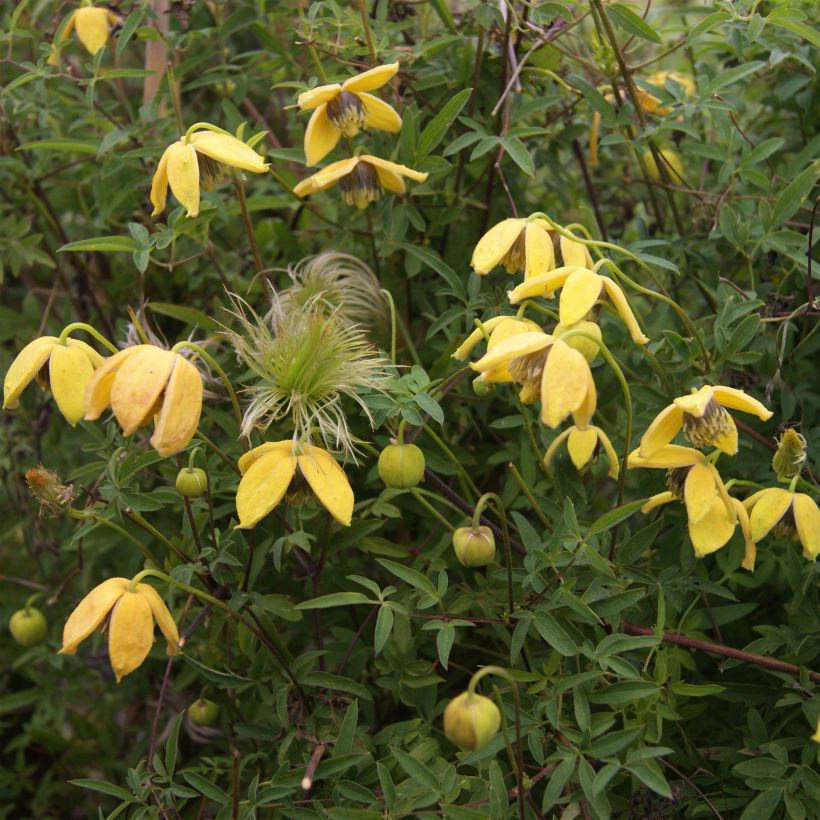



Plant habit
Flowering
Foliage
Botanical data
Clematis
tibetana var. vernayi
Orange Peel
Ranunculaceae
Vernay's Clematis, Orange Peel Clematis
Himalayas
Planting and care
The 'Orange Peel' clematis tolerates mountainous climates quite well. It will appreciate sunny exposures, but also the dappled shade of a deciduous tree in summer. Plant it in a fertile, humus-rich, well-drained soil, shading the roots and base of the stem (with a flat tile, for example). The clematis often wilts in overly wet soil. Install it by covering the root ball with 3 cm (1in) of soil, in soil worked to a depth of 20 cm (8in), lightened with good compost and coarse sand. After planting, cut back the clematis stems to about 30 cm (12in) from the base above a nice pair of buds. During the first few weeks, water regularly. However, be careful not to let the water stagnate as this can cause a fungus to develop at the collar. Mulch all clematis in February with garden compost or well-rotted manure, avoiding direct contact with the stems. Train the stems, without squeezing them, until the plant clings to itself. Clematis also like to grow freely on neighbouring plants. After a few years, cover the base of your climbing clematis with a small mound of soil, in order to reduce the risk of wilting while promoting the growth of vigorous shoots from the stump. Voles and grey worms can attack clematis and devour the stems. Aphids and greenhouse whiteflies are also potential parasites of clematis.
Planting period
Intended location
Care
Planting & care advice
-
, onOrder confirmed
Reply from on Promesse de fleurs
Similar products
Haven't found what you were looking for?
Hardiness is the lowest winter temperature a plant can endure without suffering serious damage or even dying. However, hardiness is affected by location (a sheltered area, such as a patio), protection (winter cover) and soil type (hardiness is improved by well-drained soil).

Photo Sharing Terms & Conditions
In order to encourage gardeners to interact and share their experiences, Promesse de fleurs offers various media enabling content to be uploaded onto its Site - in particular via the ‘Photo sharing’ module.
The User agrees to refrain from:
- Posting any content that is illegal, prejudicial, insulting, racist, inciteful to hatred, revisionist, contrary to public decency, that infringes on privacy or on the privacy rights of third parties, in particular the publicity rights of persons and goods, intellectual property rights, or the right to privacy.
- Submitting content on behalf of a third party;
- Impersonate the identity of a third party and/or publish any personal information about a third party;
In general, the User undertakes to refrain from any unethical behaviour.
All Content (in particular text, comments, files, images, photos, videos, creative works, etc.), which may be subject to property or intellectual property rights, image or other private rights, shall remain the property of the User, subject to the limited rights granted by the terms of the licence granted by Promesse de fleurs as stated below. Users are at liberty to publish or not to publish such Content on the Site, notably via the ‘Photo Sharing’ facility, and accept that this Content shall be made public and freely accessible, notably on the Internet.
Users further acknowledge, undertake to have ,and guarantee that they hold all necessary rights and permissions to publish such material on the Site, in particular with regard to the legislation in force pertaining to any privacy, property, intellectual property, image, or contractual rights, or rights of any other nature. By publishing such Content on the Site, Users acknowledge accepting full liability as publishers of the Content within the meaning of the law, and grant Promesse de fleurs, free of charge, an inclusive, worldwide licence for the said Content for the entire duration of its publication, including all reproduction, representation, up/downloading, displaying, performing, transmission, and storage rights.
Users also grant permission for their name to be linked to the Content and accept that this link may not always be made available.
By engaging in posting material, Users consent to their Content becoming automatically accessible on the Internet, in particular on other sites and/or blogs and/or web pages of the Promesse de fleurs site, including in particular social pages and the Promesse de fleurs catalogue.
Users may secure the removal of entrusted content free of charge by issuing a simple request via our contact form.
The flowering period indicated on our website applies to countries and regions located in USDA zone 8 (France, the United Kingdom, Ireland, the Netherlands, etc.)
It will vary according to where you live:
- In zones 9 to 10 (Italy, Spain, Greece, etc.), flowering will occur about 2 to 4 weeks earlier.
- In zones 6 to 7 (Germany, Poland, Slovenia, and lower mountainous regions), flowering will be delayed by 2 to 3 weeks.
- In zone 5 (Central Europe, Scandinavia), blooming will be delayed by 3 to 5 weeks.
In temperate climates, pruning of spring-flowering shrubs (forsythia, spireas, etc.) should be done just after flowering.
Pruning of summer-flowering shrubs (Indian Lilac, Perovskia, etc.) can be done in winter or spring.
In cold regions as well as with frost-sensitive plants, avoid pruning too early when severe frosts may still occur.
The planting period indicated on our website applies to countries and regions located in USDA zone 8 (France, United Kingdom, Ireland, Netherlands).
It will vary according to where you live:
- In Mediterranean zones (Marseille, Madrid, Milan, etc.), autumn and winter are the best planting periods.
- In continental zones (Strasbourg, Munich, Vienna, etc.), delay planting by 2 to 3 weeks in spring and bring it forward by 2 to 4 weeks in autumn.
- In mountainous regions (the Alps, Pyrenees, Carpathians, etc.), it is best to plant in late spring (May-June) or late summer (August-September).
The harvesting period indicated on our website applies to countries and regions in USDA zone 8 (France, England, Ireland, the Netherlands).
In colder areas (Scandinavia, Poland, Austria...) fruit and vegetable harvests are likely to be delayed by 3-4 weeks.
In warmer areas (Italy, Spain, Greece, etc.), harvesting will probably take place earlier, depending on weather conditions.
The sowing periods indicated on our website apply to countries and regions within USDA Zone 8 (France, UK, Ireland, Netherlands).
In colder areas (Scandinavia, Poland, Austria...), delay any outdoor sowing by 3-4 weeks, or sow under glass.
In warmer climes (Italy, Spain, Greece, etc.), bring outdoor sowing forward by a few weeks.



































